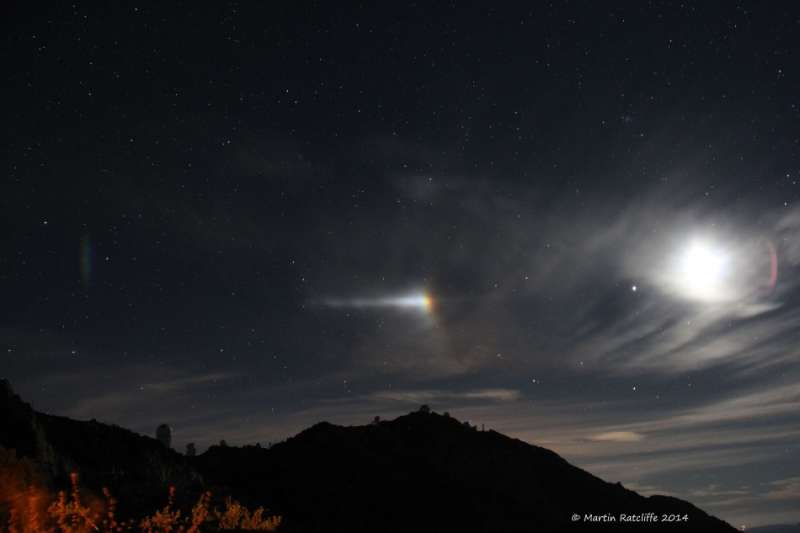Credit & Copyright: Martin Ratcliffe
Explanation:
In this night scene from the early hours of November 14,
light from a last quarter Moon illuminates clouds above the
mountaintop domes of
Kitt Peak
National Observatory near Tucson, Arizona.
Bright Jupiter is just left of the overexposed lunar disk with
a streak of camera lens flare immediately to the right, but that's no
fireball meteor
exploding near the center of the picture.
Instead, from the roadside perspective
a stunningly bright
moondog
or paraselene stands directly over
Kitt Peaks's WIYN
telescope.
Analogous to a sundog or parhelion,
a paraselene is produced by
moonlight refracted through thin, hexagonal, plate-shaped ice crystals
in high cirrus clouds.
As determined by the crystal
geometry,
paraselenae (plural) are seen at
an angle of 22 degrees or more from the Moon.
Compared to the bright lunar disk they are more
often faint
and easier to spot when the Moon is low.
About 10 minutes after the photograph
even this bright moondog had faded from the night.
1999 2000 2001 2002 2003 2004 2005 2006 2007 2008 2009 2010 2011 2012 2013 2014 2015 2016 2017 2018 2019 2020 2021 2022 2023 2024 2025 |
Yanvar' Fevral' Mart Aprel' Mai Iyun' Iyul' Avgust Sentyabr' Oktyabr' Noyabr' Dekabr' |
NASA Web Site Statements, Warnings, and Disclaimers
NASA Official: Jay Norris. Specific rights apply.
A service of: LHEA at NASA / GSFC
& Michigan Tech. U.
|
Publikacii s klyuchevymi slovami:
atmosfernye yavleniya
Publikacii so slovami: atmosfernye yavleniya | |
Sm. takzhe:
Vse publikacii na tu zhe temu >> | |
